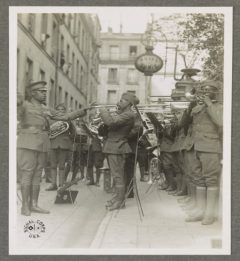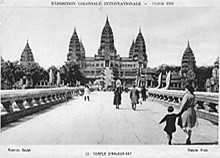HIST 4201A: Paris in the Jazz Age and Beyond
Winter 2024
Instructor: Professor Susan Whitney
 African American soldiers brought jazz to France at the end of the First World War. In the decade following the war, jazz was “all the rage” in Paris. Some people seemed to want to dance their worries away and female performers bared their bodies in new ways. People seemed to be going a bit crazy. Indeed, the French often remember the 1920s as “les années folles,” the crazy years, while North Americans prefer the moniker “Jazz Age.” This seminar explores the history of Paris during this decade by taking the long view.
African American soldiers brought jazz to France at the end of the First World War. In the decade following the war, jazz was “all the rage” in Paris. Some people seemed to want to dance their worries away and female performers bared their bodies in new ways. People seemed to be going a bit crazy. Indeed, the French often remember the 1920s as “les années folles,” the crazy years, while North Americans prefer the moniker “Jazz Age.” This seminar explores the history of Paris during this decade by taking the long view.
 By the 1920s, there were few cities that had as many admirers as Paris or fulfilled as many functions. Paris mixed tradition with revolutionary political and cultural impulses and architectural elegance with antiquated housing and urban poverty. The city was at once the capital of France and its overseas empire; the centre of French political life; the primary showcase for French cultural, imperial, and global ambitions; and a magnet for tourists, artists, writers, revolutionaries, and young people from across the globe.
By the 1920s, there were few cities that had as many admirers as Paris or fulfilled as many functions. Paris mixed tradition with revolutionary political and cultural impulses and architectural elegance with antiquated housing and urban poverty. The city was at once the capital of France and its overseas empire; the centre of French political life; the primary showcase for French cultural, imperial, and global ambitions; and a magnet for tourists, artists, writers, revolutionaries, and young people from across the globe.
During the 1920s, Paris was home not just to Parisians, but also to American writers such as Ernest Hemingway and Gertrude Stein, the Spanish artist Pablo Picasso, the Russian-born writer Irène Nemirovsky, who became posthumously famous after the publication of Suite française, and numerous African American jazz musicians and performers, including Josephine Baker. These performers found freedoms in Paris that eluded them in the United States. International students and anti-colonial activists also came to Paris. Ho Chi Minh, who later led Vietnam to victory over both the French colonial masters and the United States, got his start in revolutionary politics in Paris during this period.
Course description: Our historical examination of 1920s Paris introduces students to the key topics and problems that have absorbed historians writing about Paris in the early twentieth century. We will begin by considering Paris’ transformation into a modern city in the second half of the nineteenth century, its emergence as a global pleasure capital, and the impact of the First World War on the city. The majority of our seminar meetings will explore key facets of Paris history between 1917 and 1931, when Paris hosted the last great colonial exhibition. (See the postcard below for one of the colonial buildings built for the exhibition). We will use printed primary and secondary sources as well as visual and audiovisual sources to examine Paris as a city for which politicians, architects, artists, writers, and tourists all had plans and dreams. We will consider people’s diverse experiences of living in this city of neighborhoods; the political movements and identities the city gave rise to; the cultural life that attracted so many; and the international exhibitions that helped shape modern Paris and cement its place in the global imagination. The poster for the 1889 international exhibition above advertised the new structure built for the exhibition, the Eiffel Tower. We will also contemplate the arrival of jazz to Paris and consider how Josephine Baker became one of the era’s most fascinating modern women. Throughout, we will pay particular attention to the relationship Paris and its inhabitants had to the modern and to tourism, and we will consider how issues pertaining to race, gender, and empire played themselves out for performers such as Baker and within the city’s confines more generally.
 Course format and evaluation: The course will be run as a seminar during which we will discuss the assigned readings and occasional film and video clips. Students will be evaluated on their informed participation in seminar discussions.
Course format and evaluation: The course will be run as a seminar during which we will discuss the assigned readings and occasional film and video clips. Students will be evaluated on their informed participation in seminar discussions.
Written work will also be an important element of this seminar course. Students will have the opportunity to investigate a topic of their choice in a research paper of roughly 12-15 pages. To help students design the best research topic possible, everyone will be asked to prepare a proposal and an annotated bibliography. Students who have a reading knowledge of French are encouraged to design a topic that uses the amazing sources available on the French national library’s digital website, Gallica. Students may also be asked to write one short analysis of assigned readings. All assignments and course expectations will be described at length on the course outline and discussed extensively in class.
At this point, the exact assignments and grade distribution have not been decided upon. That said, the two most important components of the course grade will be weekly seminar participation and the various components of the research paper. As mentioned, students will also be expected to submit a research proposal and annotated bibliography and present their research to their classmates.
Question? Please feel free to contact Professor Whitney at Susan.Whitney@carleton.ca if you have any questions about the course.